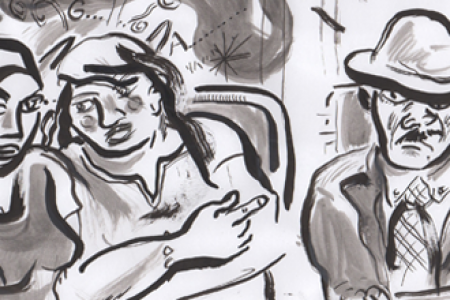Adolescence – a springboard to adulthood
Little children compare themselves with themselves. Uncomplicated: ‘I can run fast; I can write neatly; I’m a big boy; I'm a smart boy’. But all that changes in puberty.
Adolescents start to compare themselves with others; they are more receptive to factors in their environment and more self-focused. And this is a good thing: they need to detach themselves from their parents to make their way to adulthood.
The awareness that their frame of reference has changed – that they are no longer comparing themselves with themselves but with the people around them – can be a turbulent discovery for young people. Some of these teenagers start to push the boundaries and become ‘rebellious’. But all teenagers are primarily self-centred; they need to they discover themselves.
Some adolescents are disoriented by the discovery that they are different from others. They may experience a dip in self-esteem and be assailed by doubts about their performance at school. They may no longer understand their own emotions. Adults are better able to handle these sorts of feelings and emotions.
For adolescents this is a quest that is often fraught with conflict: who am I?
More emotions
All this is tied up with the development of the frontal cortex, the part of the brain that governs various functions such as planning, social behaviour, and impulse control. At the same time, at the onset of puberty the deep cerebral nuclei – which are important for the emotions – are stimulated. This means more activity in the emotional nuclei, whilst the brain areas that are important for rational thinking are still under development.
Fine tuning
Now we know that maturation goes on for much longer than was previously thought, this helps to explain why teenagers are influenced so much by their environment. The good news is that because teenagers’ brains are still developing, they are flexible and trainable. Training has more effect on adolescents than on adults; so it’s still possible to do a bit of fine tuning.
More time
A common question is: When does adolescence begin and end? In our modern western culture, adolescence lasts longer than ever before. In 1850 most children entered puberty at the age of thirteen or fourteen; now the average age is about ten, and this may well fall still further. Adolescence ends at about age twenty. Some people view it as a negative thing – such a long period of uncertainty, of seesawing emotions. I see it more as an opportunity: it gives you more time to discover yourself and shape your personality.
More understanding
Adolescence is a unique period in our lives. Knowing more about brain development in adolescence helps us understand more about how we behave. We hope that the insights from our research will really make a difference to young people and society. Our research results have already led to the implementation of various changes. The juvenile justice system now takes more account of the suspect’s developmental stage, and schools are more aware of adolescents’ needs – when planning schedules, for instance. I hope we will show greater understanding for adolescence – understand why young people are the way they are – and that we will see the positive side and recognize the opportunities. We need to give adolescents space to discover their identities, to develop and blossom into their true selves.





